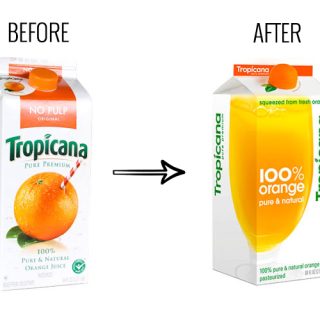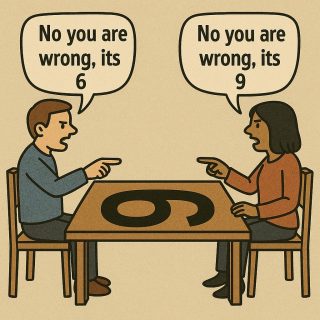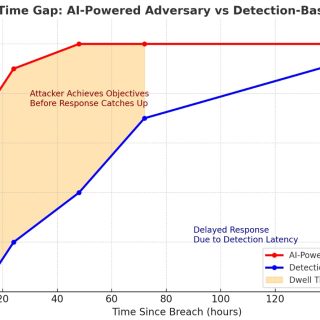1. Getting Attention of a Potential Customer
Getting the attention of potential customers is primarily about capturing their attention and making them aware of your product or service. Here are some common steps involved:
Identify the Target Audience: Understand who your potential customers are, including their demographics, interests, and needs. This step is crucial for tailoring your messaging and outreach.
Develop a Value Proposition: Create a compelling value proposition that clearly explains the benefits of your product or service. It should address the needs and pain points of your target audience.
Leverage Multiple Channels: Use various marketing channels to reach your audience. This could include social media, email marketing, content marketing (blogs, articles, videos), advertising (digital and traditional), and public relations.
Create Engaging Content: Produce content that resonates with your audience. This could be informative, educational, or entertaining, but it must be relevant and appealing to your target demographic.
Create Free Technology: If you are able to, creating and offering a free technology product can be a powerful strategy to engage potential customers, build brand recognition, and eventually convert users into paying customers. This approach leverages the value of free tools to attract users, providing them with immediate benefits while establishing a foundation for future business relationships.
Utilize SEO and SEM: Implement search engine optimization (SEO) and search engine marketing (SEM) to increase visibility in search engine results pages, drawing organic and paid traffic.
2. Turning Them into a Qualified Lead
Once you have the attention of potential customers, the next step is to interact with them in order to qualify them as leads, meaning you identify those who are most likely to become customers. Here’s how you can do it:
- Use Lead Magnets: Offer something valuable in exchange for contact information or further engagement, like eBooks, whitepapers, free trials, or product demos. This step is crucial for building your database of prospects. Once the potential customer have engaged with the lead magnet then you can:
- Qualify Through Direct Interaction: Use direct interactions, such as
- Sales calls or face-to-face meetings: to further gauge the lead’s interest and readiness to buy. This can involve discussing their needs in detail and how your product can meet them. Or
- Follow up on interactions from your initial outreach: This could be responding to queries on social media, emails, or calls from potential customers.
Although the above steps describe how a potential customer can be turned into a qualified lead, expanding on the anatomy of a Qualified lead would be good insight
Anatomy of Qualified Lead
To determine if someone is a qualified lead, you need to evaluate their likelihood of purchasing based on further criteria:
- Engagement Level: How much and in what ways do they engage with your content or follow-up communications after receiving the lead magnet? Do they open emails, click on links, or respond to calls to action?
- Need and Fit: Does the potential customer’s needs align with what your product or service offers? Are they in the right industry, company size, or role that fits your typical customer profile?
- Budget and Authority: Does the potential customer have the budget or the authority to make purchasing decisions? This information often requires direct conversation or deeper research.
- Timeline: Is there an indication of when they might be ready to make a purchase? Immediate needs often qualify a lead further compared to a vague or distant interest.
Don’t forget, based on how the company have architected their sales funnels, turning a “Potential Customer” into a “Qualified Lead” is in the main a joint effort between sales and marketing departments (unless the organization has no sales people and rely solely lets say on ecommerce).
When it comes to sales departments and their effort in turning a “Potential Customer” into a “Qualified lead”, There are different lead qualification methodologies. But before we talk about these methodologies lets understand what sales people have to go thru in their workday with few jokes:
-Why do salespeople love puzzles?
Because they’re experts at picking out the right pieces from a jumbled pile of leads!
-Why did the salesperson sign up for the “Kissing Frogs” dating service?
Because they heard you have to kiss a lot of frogs to find a prince, and they figured it couldn’t be harder than qualifying leads!
-Why do salespeople love fishing tournaments?
Because they’re used to casting a wide net and reeling in anything that bites—just like handling leads!
-Why do salespeople always carry a sieve?
Because they’re great at sifting through a ton of leads to find the golden ones!
-Why are salespeople like bakers?
Because they have to sift through a lot of flour to bake up some sweet deals!
-Why did the salesperson bring a flashlight to work?
Because they’re always searching for those hidden, shining leads!
-Why are salespeople like archaeologists?
Because they dig through layers of information to uncover the treasure!
-Why do salespeople love playing darts?
Because hitting the bullseye is just like landing that perfect lead!
-Why do salespeople carry magnifying glasses?
Because they’re always looking closer to distinguish the real deals from the duds!
-Why did the salesperson go to the beach?
Because they know how to find the gems buried in the sand of leads!
-Why do salespeople make good detectives?
Because they’re always sorting through the clues to figure out which leads will crack the case!
-Why do salespeople love gardening?
Because they know you have to dig through a lot of dirt to find the seeds that will grow into sales!
-Why do salespeople love going to the gym?
Because just like with leads, they know it’s all about separating the heavyweights from the lightweights!
You get the jist! How can we help sales people with this arduous process of kissing frogs, doing puzzles, sifting thru, digging thru the dirt and so on…
There are numerous different methodologies that sales people can use for lead qualification, some of them are
BANT (budget, authority, needs and timeline)
GPCTBA/C&I (goals, plans, challenges, timeline, budget, authority, consequences and implications),
CHAMP (challenges, authority, money and prioritization)
MEDDIC (metrics, economic buyer, decision criteria, decision process, identify pain and champion)
My personal favorite is MEDDIC! Works well for technology companies in my experience.
What is MEDICC?
MEDICC (Metrics, Economic Buyer, Decision Criteria, Decision Process, Identify Pain, Champion, and Competition) is a methodology used to evaluate and qualify sales opportunities. Each component of the framework offers a unique lens through which sales teams can assess the potential of a lead.
1. Metrics (M)
Metrics are the quantifiable measures that your prospect aims to improve with your solution. Understanding these allows you to tailor your pitch to highlight how your product can directly impact these key performance indicators (KPIs).
Application in Lead Qualification: Use initial interactions to determine if your solution aligns with the metrics the lead is trying to improve. Leads that have clear, measurable goals that your product can influence are more likely to be qualified.
2. Economic Buyer (E)
The economic buyer is the person who has the budget authority to make the purchase decision. Identifying this individual early in the process is crucial.
Application in Lead Qualification: Ensure that the leads you pursue have introduced you to, or can introduce you to, the economic buyer. This validates the lead’s potential and seriousness about making a purchasing decision.
3. Decision Criteria (D)
These are the benchmarks and standards a company uses to evaluate potential solutions. Knowing these criteria can help you position your product more effectively.
Application in Lead Qualification: During conversations, probe to understand the criteria leads will use to make their decision. Qualified leads will have criteria that closely match your product’s strengths.
4. Decision Process (D)
This refers to the steps the company will take to arrive at a decision, including what needs to happen for a purchase to be approved.
Application in Lead Qualification: Determine if the lead has a clear and achievable decision process where your solution can fit in a timely manner. Leads with a convoluted or unclear process may require more resources than they are worth.
5. Identify Pain (I)
Effectively qualifying leads involves understanding their challenges and pain points. Your solution should address these pains directly.
Application in Lead Qualification: Focus on leads who articulate specific pains that your product can alleviate. The more acute the pain, the higher the urgency and likelihood of conversion.
6. Champion (C)
A champion is an advocate within the prospect’s organization who supports your solution. They can navigate you through the decision process and help overcome internal objections.
Application in Lead Qualification: Qualify leads that either have a champion or where you can identify and develop a champion. Without a champion, your chances of closing the deal decrease significantly.
7. Competition (C)
Understanding who your competitors are in the eyes of the lead can provide critical insights into how to position your product.
Application in Lead Qualification: Leads that are considering or using a competitor’s solution are still viable but require a different approach. Assess the strength of competition and the lead’s openness to switching to your solution.
Implementing MEDICC for Lead Qualification
To effectively use MEDICC for lead qualification, integrate it into your CRM and training processes. Train your sales team to collect information relevant to each component of MEDICC during their interactions with leads. This structured approach not only improves the efficiency of your qualification process but also ensures that your team focuses their efforts on leads with the highest potential for conversion.
Adapting the MEDICC framework for lead qualification can transform how your sales team prioritizes and engages with prospects. By methodically assessing each lead against the MEDICC criteria, you can enhance the effectiveness of your sales strategy, increase conversion rates, and ultimately drive more revenue.



